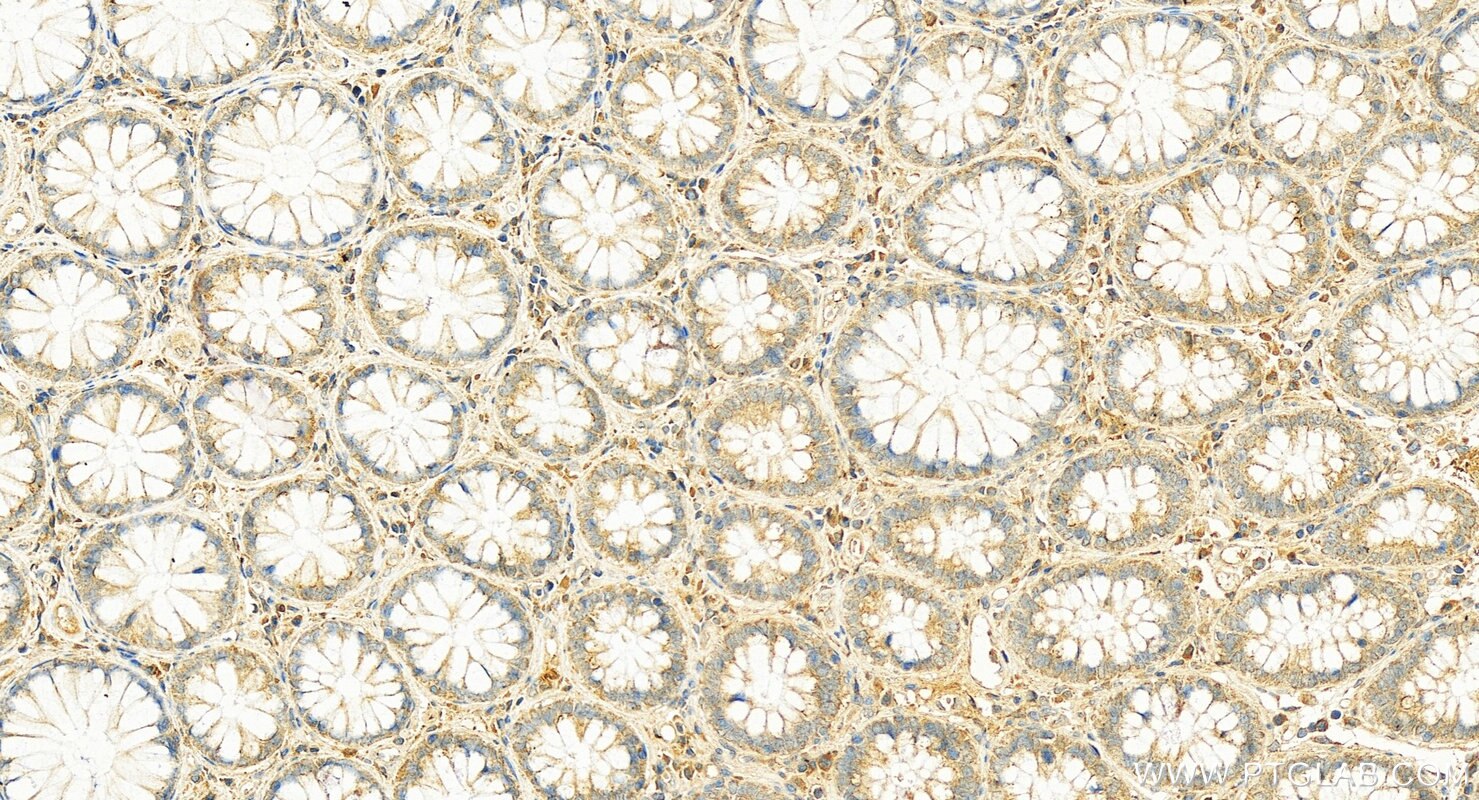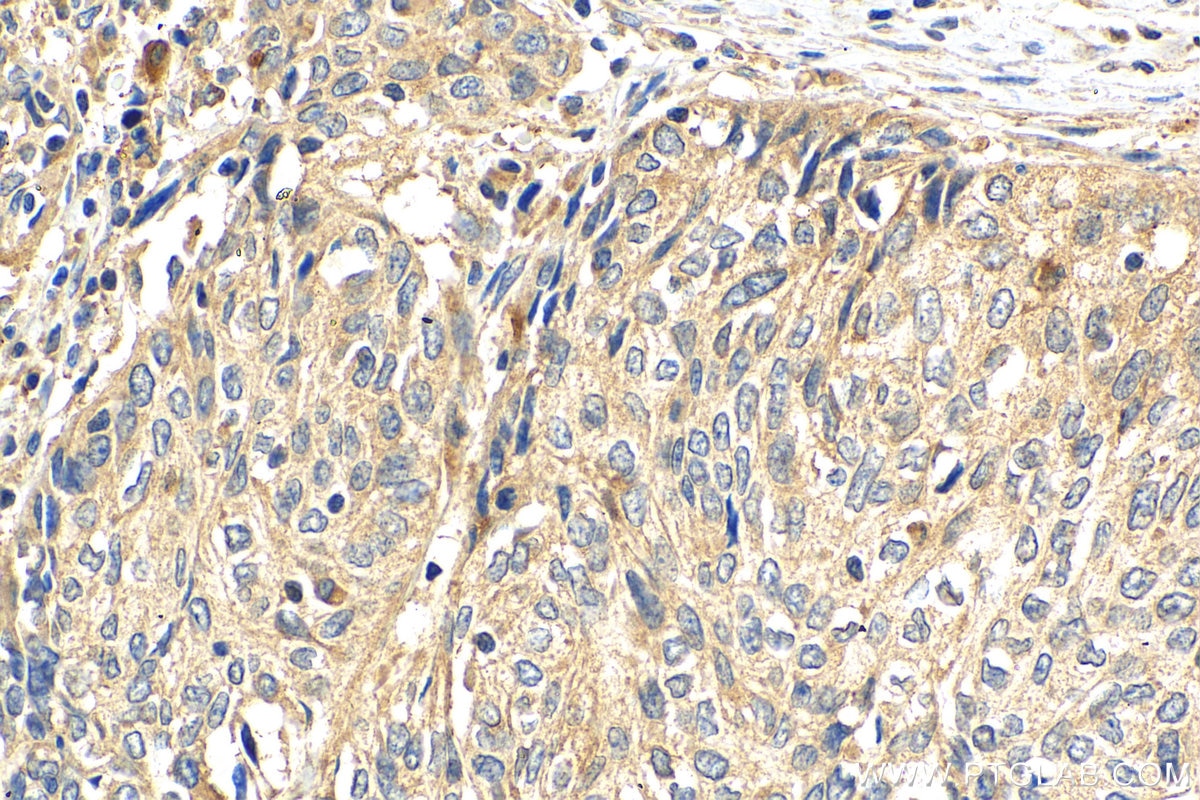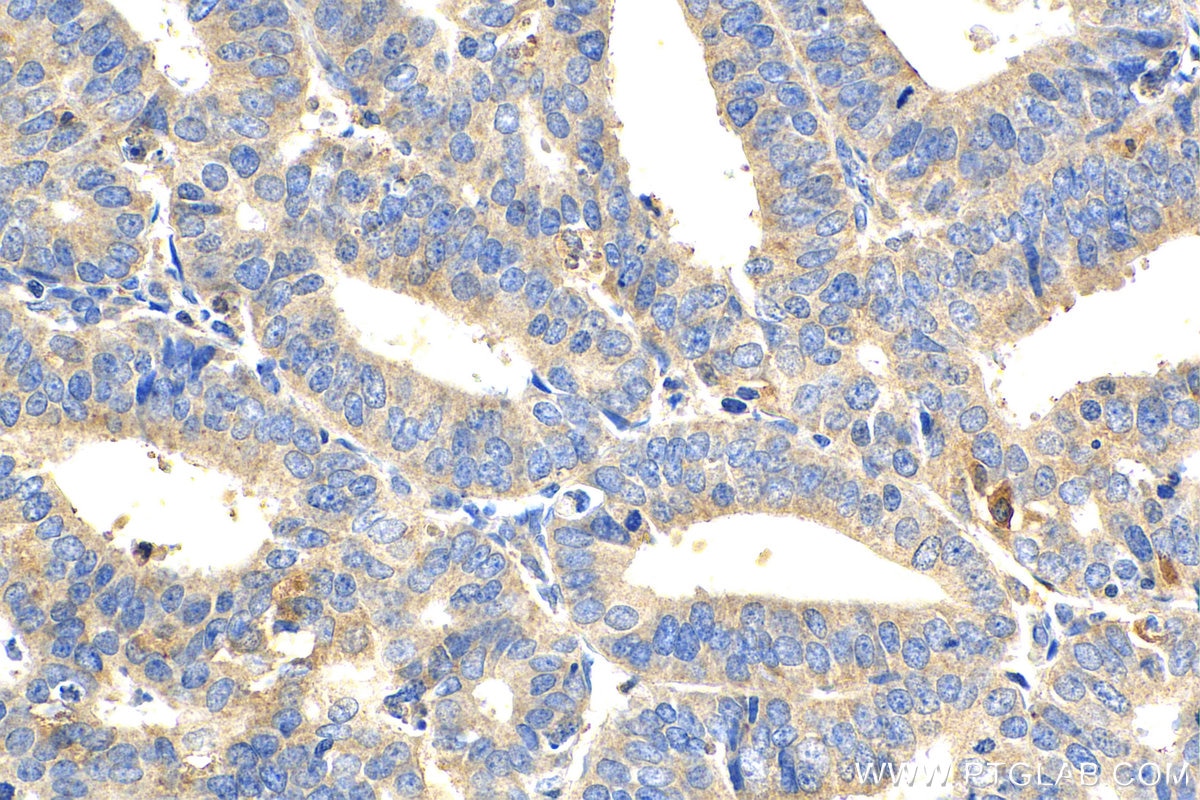Validation Data Gallery
Tested Applications
| Positive IHC detected in | human colon cancer tissue, human cervical cancer tissue, human endometrial cancer tissue Note: suggested antigen retrieval with TE buffer pH 9.0; (*) Alternatively, antigen retrieval may be performed with citrate buffer pH 6.0 |
Recommended dilution
| Application | Dilution |
|---|---|
| Immunohistochemistry (IHC) | IHC : 1:50-1:500 |
| It is recommended that this reagent should be titrated in each testing system to obtain optimal results. | |
| Sample-dependent, Check data in validation data gallery. | |
Product Information
25085-1-AP targets NPSR1 in IHC, ELISA applications and shows reactivity with human samples.
| Tested Reactivity | human |
| Host / Isotype | Rabbit / IgG |
| Class | Polyclonal |
| Type | Antibody |
| Immunogen | NPSR1 fusion protein Ag18785 相同性解析による交差性が予測される生物種 |
| Full Name | neuropeptide S receptor 1 |
| Calculated molecular weight | 371 aa, 43 kDa |
| GenBank accession number | BC132693 |
| Gene Symbol | NPSR1 |
| Gene ID (NCBI) | 387129 |
| Conjugate | Unconjugated |
| Form | Liquid |
| Purification Method | Antigen affinity purification |
| UNIPROT ID | Q6W5P4 |
| Storage Buffer | PBS with 0.02% sodium azide and 50% glycerol , pH 7.3 |
| Storage Conditions | Store at -20°C. Stable for one year after shipment. Aliquoting is unnecessary for -20oC storage. |
Background Information
Neuropeptide S receptor 1 (NPSR1), previously known as GPRA and GPR154, is a G protein-coupled receptor (GPCR) that plays a significant role in various physiological processes. NPSR1 is primarily expressed in the bronchus, brain, and immune cells. It is also found in specific peripheral cell types such as monocytes/macrophages and neuroendocrine cells of the gut (PMID: 30711025).
Protocols
| Product Specific Protocols | |
|---|---|
| IHC protocol for NPSR1 antibody 25085-1-AP | Download protocol |
| Standard Protocols | |
|---|---|
| Click here to view our Standard Protocols |


